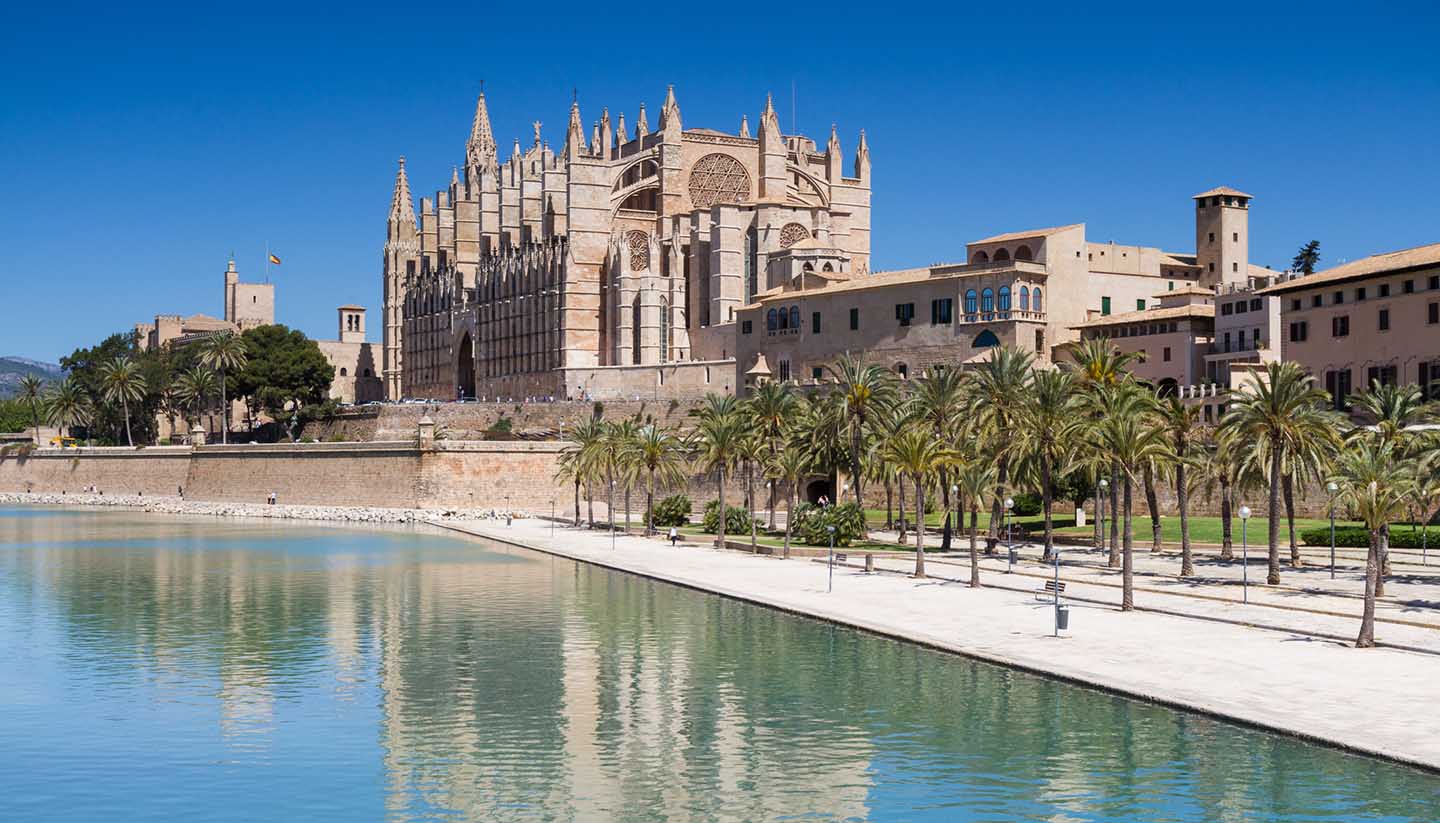Palma de Mallorca Travel Guide
About Palma de Mallorca
With its towering cathedral, honey stone streets and a munificence of tapas bars, Palma de Mallorca might be small but it’s certainly not boring.
Perched on the crescent-shaped Bay of Palma, the city has a long and interesting history, hints of which can still be seen in the architecture which veers from Moorish and gothic to modern.
What you won’t find, however, are the ugly 1970s skyscrapers that blight the likes of Benidorm and nearby Magaluf, nor the seedy bars and clubs that have given the latter a rather unsavoury reputation.
Instead, Palma is a sophisticated spot with a marina that overflows with yachts come summer and a restaurant scene designed with the discerning in mind.
For all that, central Palma is a sleepy spot, dominated by sunny squares and latticed courtyards. Taking pride of place is the Le Seu cathedral, a gothic masterpiece that dominates the city’s waterfront.
The maze of cobbled alleys nearby announces the presence of the Old Town; an area packed with traditional restaurants, pavement cafés and hidden squares. Rather wonderfully, shops selling traditional crafts such as glass ornaments, handmade lace and olive wood carvings sit side-by-side with upmarket (and seriously expensive) boutiques.
Down by the waterfront, fishermen still mend their nets by hand on the harbour's edge, while dozens of sun-dappled boats bob in the pretty marina. These are the source of what’s on offer in the city’s restaurants which, not surprisingly, tend to be awash with fresh seafood, much of it plucked from nearby waters.
Wine too tends to be a local affair, with Palma and much of Mallorca dotted with vineyards that produce vintages as good as anything you might find on the mainland. More can be found in the markets throughout the city, although the one along La Rambla specialises in brightly coloured blooms rather than bottles of vino.
By the end of a trip to Palma, you will have experienced all that Spain can offer in just one island capital.


